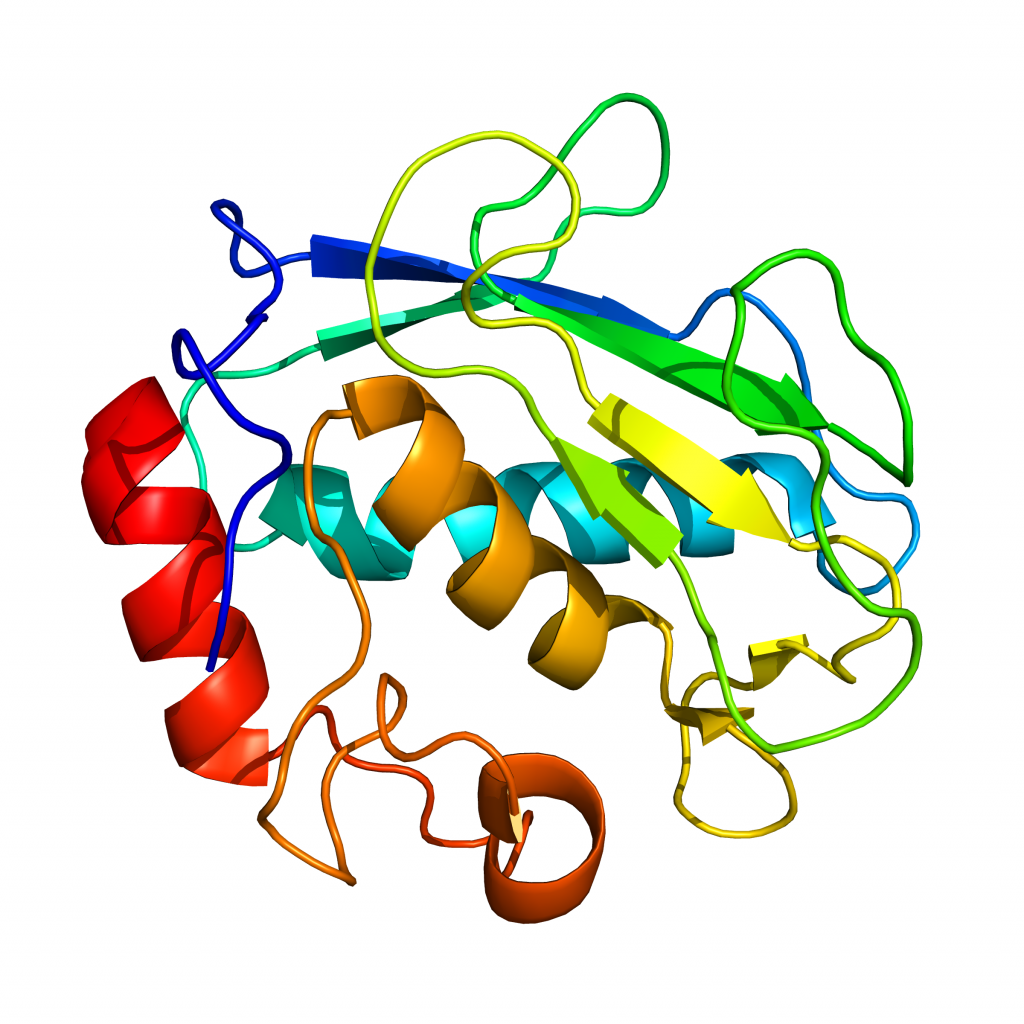Additional information
| Qty | 10 μg, 5 x 10 μg, 100 μg |
|---|---|
| Shipping in Dry Ice | yes |

210,00€ – 680,00€
Human, recombinant.
Residues 100-272, UniProtKB accession P08254
MW = 19.5 kDa.
EC # 3.4.24.17
CAT # G04MP03Cm
| Catalog n. | Qty | Price |
|---|---|---|
| 210,00€ | ||
| 420,00€ | ||
| 680,00€ | ||
| VAT not included | ||
For any special request or bulk quantities Click Here
| Qty | 10 μg, 5 x 10 μg, 100 μg |
|---|---|
| Shipping in Dry Ice | yes |
100 110 120
M-F RTFPGIPKWR KTHLTYRIVN
130 140 150 160 170 180
YTPDLPKDAV DSAVEKALKV WEEVTPLTFS RLYEGEADIM ISFAVREHGD DYPFDGPGNV
190 200 210 220 230 240
LAHAYAPGPG INGDAHFDDD EQWTKDTTGT NLFLVAAHEI GHSLGLFHSA NTEALMYPLY
250 260 265
HSLTDLTRFR LSQDDINGIQ SLYGP
Purity
> 95% by SDS-PAGE. The protein is observed, in denaturing conditions, as a single band migrating at a molecular weight between 18.4 and 25.0 kDa.
Suppied As
0.2 mg/mL solution in Tris 20 mM, pH 7.2, CaCl2 10 mM, ZnCl2 0.1 mM, NaCl 0.3 M, acetohydroxamic acid (AHA) 0.2 M. The concentration is calculated by the analysis of the absorbance at 280 nm (ε280 = 28420 M-1cm-1 calculated).
Specific activity
> 30 U/μg. Activity described as U=100 pmol/min at 37°C using a colorimetric assay with thiopeptolide Ac-Pro-Leu-Gly-[2- mercapto-4-methyl-pentanoyl]-Leu-Gly-OC2H5 (Biomol) as substrate.
Storage
-80°C. After initial defrost, aliquot the product into individual tubes and refreeze at -80°C.
Avoid repeated freeze/thaw cycles.
Usage
Enzyme kinetic studies, cleavage of target substrates and screening of inhibitors.
RELEATED RESEARCH FIELDS
By continuing to use the site, you agree to the use of cookies. more information
The cookie settings on this website are set to "allow cookies" to give you the best browsing experience possible. If you continue to use this website without changing your cookie settings or you click "Accept" below then you are consenting to this.